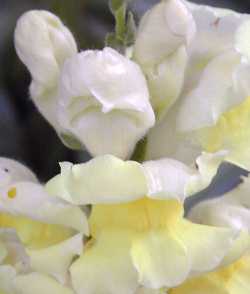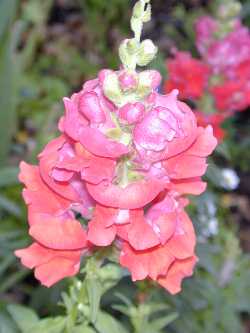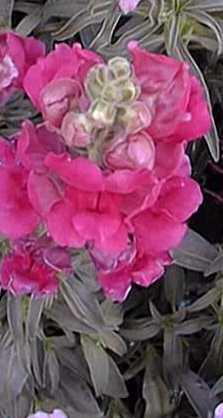Sunset®: All zones as annual
AHS: 12-1
USDA: 5-10 as annual, 9b-10 as a perennial
Frost Tolerance: Cold season annual in Phoenix, although it is sometimes possible to keep them alive over the summer, if they get enough water and shade
Heat Tolerance: They tend to stop blooming, look ragged in September when they start growing again.
Sun Exposure: Full sun, in hot summer areas, light shade is needed
Origin: Mediterranean basin
Growth Habits: Perennial generally used as hardy or half-hardy annual, up to 3 feet (90 cm) depending on variety, the dwarf types are up to 12 inches tall (30 cm).
Watering Needs: Regular water, keep the soil evenly moist.
Propagation: Seeds in spring or early fall (early fall in Phoenix)

The genus name 'Antirrhinum' comes from the Greek for 'nose-like'. Depending on the variety, snapdragons can be low and mound forming or tall. The low-growing cultivars are good edging plants.

Culture:
Plant 1 foot apart (30 cm). Deadhead to promote more flowers. Orange spots under the leaves are sign of rust. Treat with systemic fungicide, or prevent by avoiding keeping the leaves humid. Rust is particularly a problem in winter, and it is one of the reasons that snapdragons are grown as annuals.
Propagation:
Sow indoor at 60°F (16°C). Do not cover the seeds. Set outside at 8 weeks old after the last hard frosts.
Desert-Tropicals is dedicated to provide gardening advice, gardening ideas, and information about flower of all kind for landscape and collections.We try to check carefully the identification of the plants on the illustrations as well as the other information from the page, but occasionally errors do occur. if you notice anything that needs to be changed please contact us.Thanks.
© 1998-2020 Philippe Faucon, All Rights Reserved.
